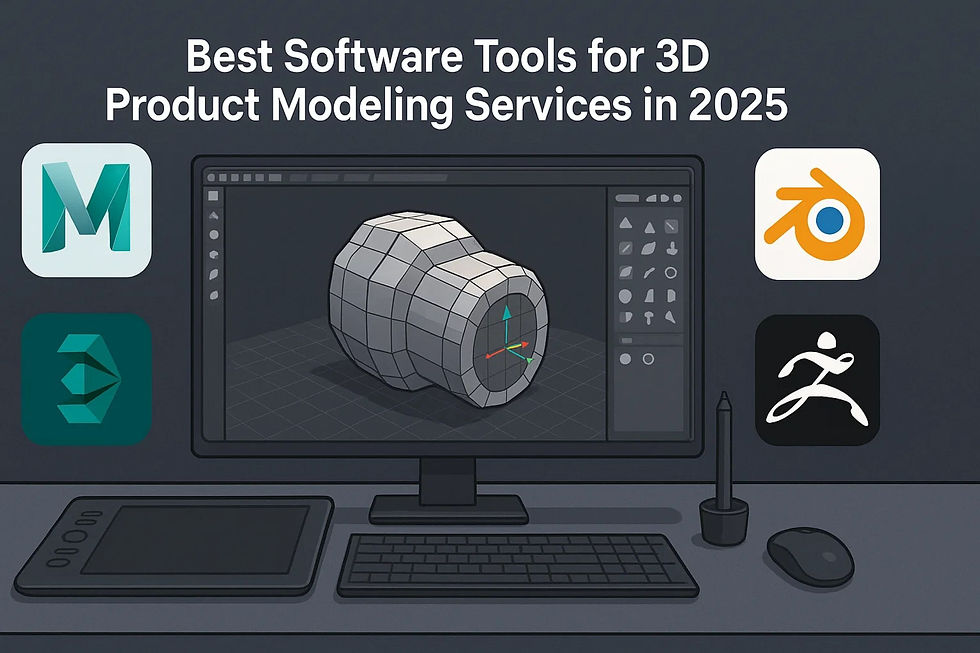Custom vs. Canned: Photoshop Workflows in Golf CAD Services That AI Can’t Replicate
- Hemant vizent
- May 26
- 5 min read

Photoshop Workflows in Golf CAD Services
In the evolving world of golf course planning, digital tools like CAD software and Photoshop have redefined the accuracy and creativity behind Golf Course Drawings. Whether you're visualizing a Golf Course Master Plan, detailing a Grading Plan, or presenting an Irrigation Plan Drawing, the use of Photoshop for post-processing and map enhancement is indispensable.
While AI has started automating certain design processes, it still cannot match the nuance and customization possible with human-led Photoshop workflows in golf CAD services. This blog explores the key differences between custom and canned Photoshop workflows and why the former remains irreplaceable in high-stakes projects like Golf Course Design Drawings and Golf Course 3D Model creation.
The Role of Photoshop in Golf CAD Services
Photoshop is not typically the first software mentioned in CAD-based projects. Yet, it plays a crucial role in finalizing and presenting Golf Course Drawings. Whether it's adjusting color palettes to reflect topography, blending textures for a realistic Golf Course 3D Model, or adding layers of vegetation and infrastructure, Photoshop bridges the gap between technical plans and visual storytelling.
This is especially important for elements like:
Golf Course Master Plan illustrations
High-resolution renders of Grading Plans
Post-processed overlays on cut and fill Calculations
Enhanced visual layers for Irrigation Plan Drawings
Canned Workflows: Efficient but Limiting
Canned workflows in Photoshop refer to pre-built templates, automated scripts, or action packs that execute a sequence of design processes. These are often used for repetitive tasks, like exporting standard views, adding shadows, or applying common textures.
Benefits of Canned Workflows:
Speed – Bulk processing of images for large projects.
Consistency – Uniform visual language across documents.
Simplicity – Easier for teams with minimal Photoshop expertise.
Drawbacks in Golf CAD Context:
Limited Flexibility: Every golf course has unique terrain and site constraints. A cookie-cutter approach cannot accommodate the distinct features of a Golf Course Master Plan.
Generic Aesthetic: Stakeholders expect compelling visuals. A generic look doesn’t convey the sophistication of a Golf Course 3D Model or a detailed Grading Plan.
Lack of Terrain Sensitivity: Cut And Fill Calculations demand visual accuracy that automated scripts often oversimplify.
Custom Workflows: Where Craftsmanship Meets Precision
Custom Photoshop workflows, on the other hand, are manually curated by skilled designers who understand the nuances of golf architecture, CAD principles, and digital rendering. These workflows allow personalized attention to:
Topography shading in Grading Plans
Color-coding utility zones in Irrigation Plan Drawings
Blending elevation data with satellite imagery
Tailoring vegetation patterns in the Golf Course Master Plan
Why AI Can’t Compete with Custom Workflows
Even the most sophisticated AI models struggle to interpret the contextual importance of terrain, water flow, vegetation types, or human aesthetics. For instance, an AI may not recognize that a tee box should visually contrast with the surrounding rough in Golf Course Design Drawings.
Here are more reasons why AI and canned workflows fall short:
Subjective Design Decisions: Choosing where to place highlights or shadows in a Golf Course 3D Model requires human judgment.
Client Preferences: Stakeholders often request visual customizations that canned templates can’t accommodate.
Regulatory Standards: Local ordinances may affect how Grading Plan are presented; only a human can interpret and implement these nuances in Photoshop.
Data Overlays: Integrating layers like soil data or hydrology into Cut And Fill Calculations visuals often involves complex layering not suited for automation.
Photoshop in Action: A Workflow Breakdown
Let’s walk through a typical Photoshop-enhanced process for a Golf Course Master Plan as part of a broader Cad Service
1. Base Image Export from CAD
The CAD platform exports a flattened base drawing that includes contours, fairways, and basic infrastructure.
2. Layer Preparation
The designer opens the file in Photoshop and begins organizing layers—contours, labels, roads, tree lines—individually for easier editing.
3. Texture Mapping
This part is critical for a realistic Golf Course 3D Model presentation.
4. Color Grading & Shading
Here, custom lighting and shading techniques are applied to represent elevation changes for better interpretation of the Grading Plan.
5. Overlays & Annotations
Elements like flow arrows for Irrigation Plan Drawing, or excavation zones for Cut And Fill Calculations, are layered in with visual clarity in mind.
6. Final Touches
The designer adjusts contrast, adds shadows, and ensures brand color alignment before exporting the presentation file for stakeholders.
This level of refinement is nearly impossible with AI or canned workflows, as it depends on a mix of technical understanding and artistic flair.
Client-Centric Approach: Why Custom Always Wins
In today’s competitive golf development market, investors and stakeholders expect more than just functional drawings. They want Golf Course Design Drawings that sell the vision. Custom Photoshop workflows empower designers to deliver this through:
Tailored branding elements (logos, fonts, palette)
Interactive visual hierarchy (what the eye sees first)
Realistic previews that improve decision-making
For example, a Golf Course Master Plan enhanced via custom Photoshop work can win approvals faster by clearly conveying design intent to non-technical audiences like city councils or landowners.
CAD Services That Rely on Photoshop Customization
Top-tier Cad Service providers understand the vital role Photoshop plays in making technical outputs visually digestible and stakeholder-ready. Services enhanced by custom Photoshop workflows include:
Grading Plan visualization with slope emphasis
Golf Course 3D Model enhancements for presentations
cut and fill Calculations with visual terrain differentials
Irrigation Plan Drawings showing pressure zones and flow direction
Overall, golf course drawings tailored to client branding
Final Thoughts: The Irreplaceable Human Element
While AI and canned workflows offer speed and consistency, they fall short when precision, aesthetic judgment, and design intuition are required. Especially in a niche domain like Golf Course Design Drawings, the human touch in Photoshop post-processing ensures that every project feels handcrafted, because it is.
Custom workflows empower designers to interpret site-specific data, client preferences, and artistic nuances into compelling visuals that AI simply can’t replicate. Whether it's crafting a Golf Course Master Plan, refining Cut And Fill Calculations, or presenting a vibrant Irrigation Plan Drawing, Photoshop remains the unsung hero of golf Cad Service.
Read more……..





Comments